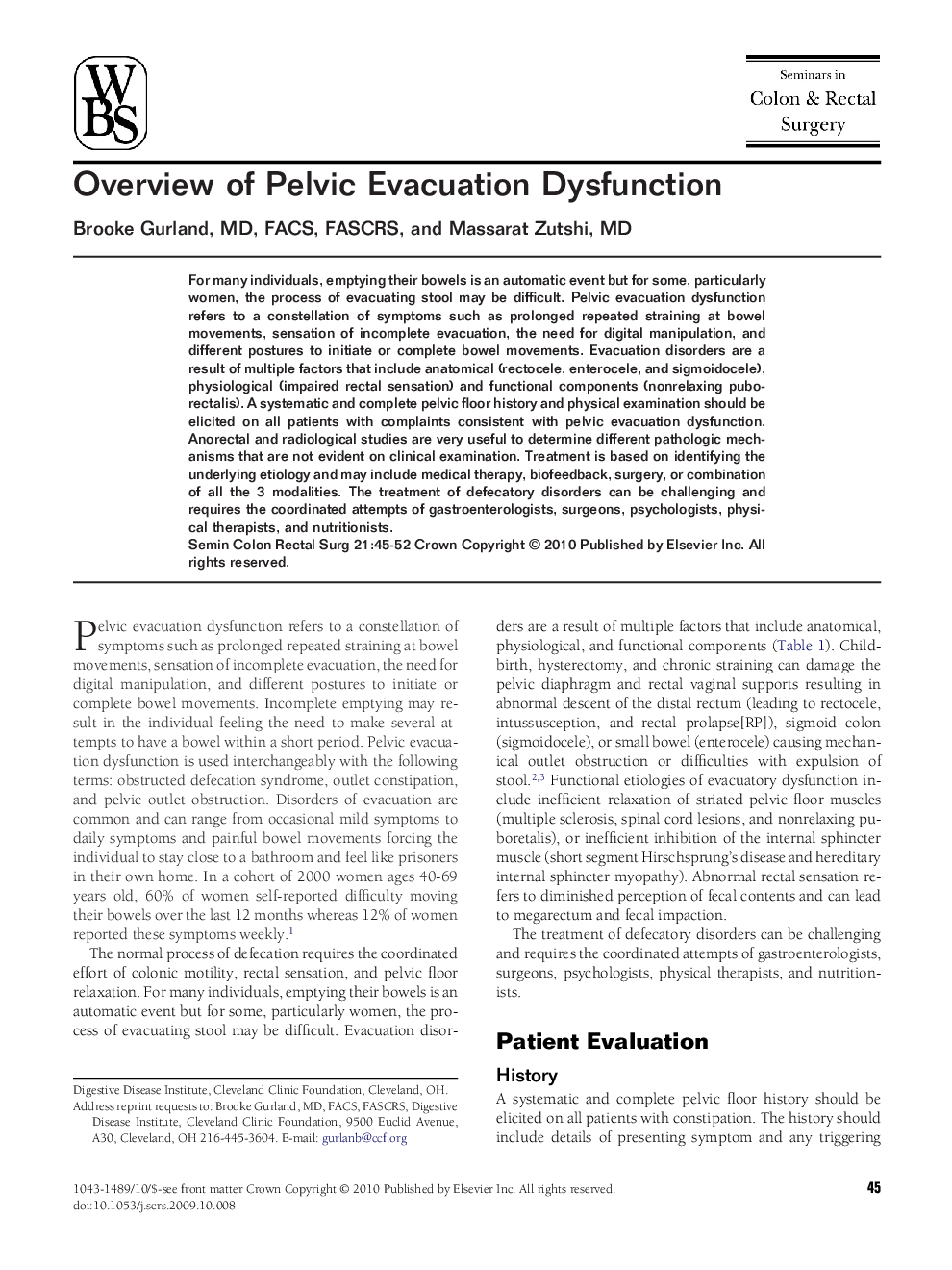| Article ID | Journal | Published Year | Pages | File Type |
|---|---|---|---|---|
| 3319513 | Seminars in Colon and Rectal Surgery | 2010 | 8 Pages |
Abstract
For many individuals, emptying their bowels is an automatic event but for some, particularly women, the process of evacuating stool may be difficult. Pelvic evacuation dysfunction refers to a constellation of symptoms such as prolonged repeated straining at bowel movements, sensation of incomplete evacuation, the need for digital manipulation, and different postures to initiate or complete bowel movements. Evacuation disorders are a result of multiple factors that include anatomical (rectocele, enterocele, and sigmoidocele), physiological (impaired rectal sensation) and functional components (nonrelaxing puborectalis). A systematic and complete pelvic floor history and physical examination should be elicited on all patients with complaints consistent with pelvic evacuation dysfunction. Anorectal and radiological studies are very useful to determine different pathologic mechanisms that are not evident on clinical examination. Treatment is based on identifying the underlying etiology and may include medical therapy, biofeedback, surgery, or combination of all the 3 modalities. The treatment of defecatory disorders can be challenging and requires the coordinated attempts of gastroenterologists, surgeons, psychologists, physical therapists, and nutritionists.
Related Topics
Health Sciences
Medicine and Dentistry
Gastroenterology
Authors
Brooke MD, FACS, FASCRS, Massarat MD,
